

William Stopford
Every SUV, ute and van discontinued in Australia in 2025
4 Hours Ago
The all-new Kia Carnival has big shoes to fill. We get behind the wheel of the all-new generation to see if it's a viable SUV alternative.
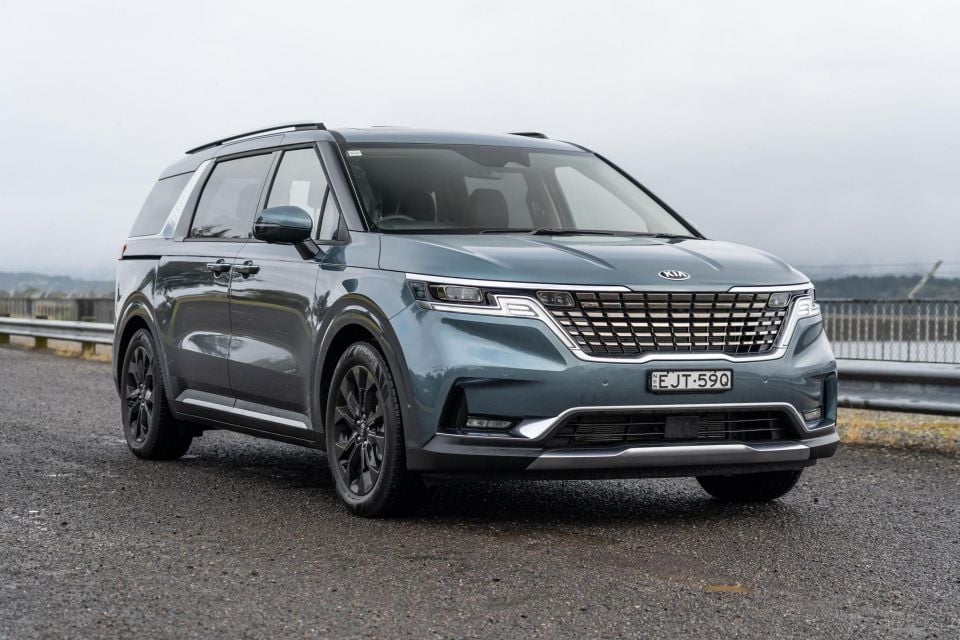
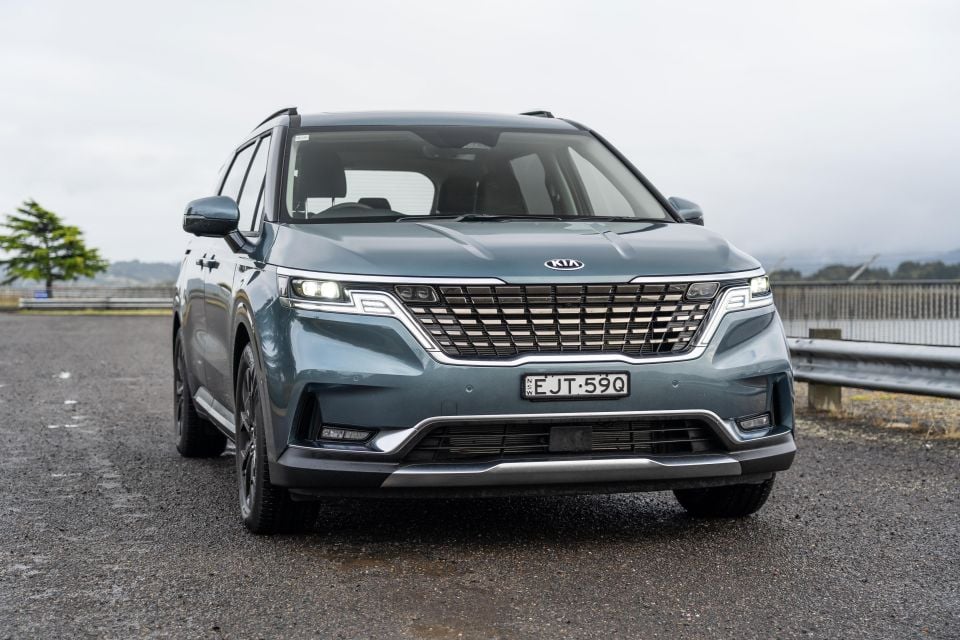

Founder
New from
$64,680
excl. on-roads

Founder
New from
$64,680
excl. on-roads


Founder
New from
$64,680
excl. on-roads

Founder
New from
$64,680
excl. on-roads
Quickly see how this car stacks up against its competition. Select any benchmark to see more details.
Where expert car reviews meet expert car buying – CarExpert gives you trusted advice, personalised service and real savings on your next new car.
I never thought I’d be saying this about a people mover but damn, the 2021 Kia Carnival looks sensational!
People movers have always been the first port of call for big families who don’t want an SUV or don’t find the cargo space on offer in an SUV roomy enough.
But that practicality often came at the cost of design. Kia aims to buck that trend with the all-new Carnival, which offers SUV styling while retaining the unmatched practicality of a people mover.
While styling is entirely subjective, I think Kia nailed the design brief. What’s more, the car makes a strong case for ignoring the current crop of giant seven-seat crossovers.
The all-new 2021 Kia Carnival kicks off from $46,880 before on-road costs for the entry-level Kia Carnival S with a V6 petrol engine.
It then climbs all the way to $66,680 before on-roads for the top-specification Kia Carnival Platinum diesel.
The model tested here is one rung down from the top, it’s the Carnival Platinum petrol. As you’ll learn soon, it’s powered by a punchy naturally-aspirated petrol V6 engine instead of the turbocharged four-cylinder diesel.
In this specification, you’re looking at $64,680 before on-road costs, or $67,990 drive-away. That’s about $4000 dearer than the equivalent model from the previous generation.
Like many other Kia models, the only optional extra is a selection of paint colours the base silver. There are seven colours to pick from, with everything other than said base silver an additional $695.

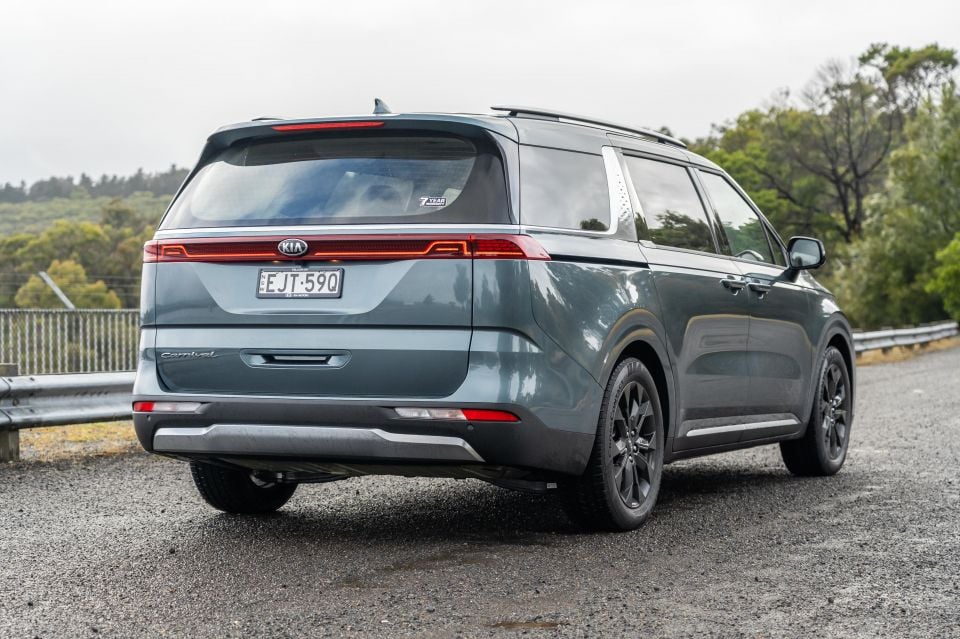
Buy your new car without the stress. It's fast, simple and completely free.

Great service from Travis and team, second time I have used this business would not hesitate to recommend them to anyone
Craig C.
Purchased a Ford Ranger in Sunshine Coast, QLD
CarExpert helped Craig save thousands on his Ford Ranger, now let us save you on your next new car.
Find a dealThis is a review of the top-specification Platinum model. If you’d like a better idea of the standard features across the rest of the Carnival range, check out our 2021 Kia Carnival pricing and specifications story.
On the outside you’ll find 19-inch black alloy wheels, chrome highlights, auto projector-type dual-LED headlights, LED daytime running lights and tail lights, power sliding doors and tailgate, proximity entry and push-button start, dual sunroofs, privacy glass, and automatic high beam.
Inside the cabin it’s a luxury affair with faux leather seats, heated and cooled first row seating, a heated steering wheel, 12-way power adjustment with memory for the driver’s seat, eight-way power passenger seat adjustment, a 12.3-inch infotainment system with wired Apple CarPlay and Android Auto, wireless phone charging, tri-zone automatic climate control, and a 12-speaker Bose sound system.
The Carnival has grown both inside and out. The 3090mm wheelbase is 30mm longer than before, while the body is 10mm wider (1995mm), and 40mm longer (5155mm) overall, most of which is behind the rear axle to improve cargo space.
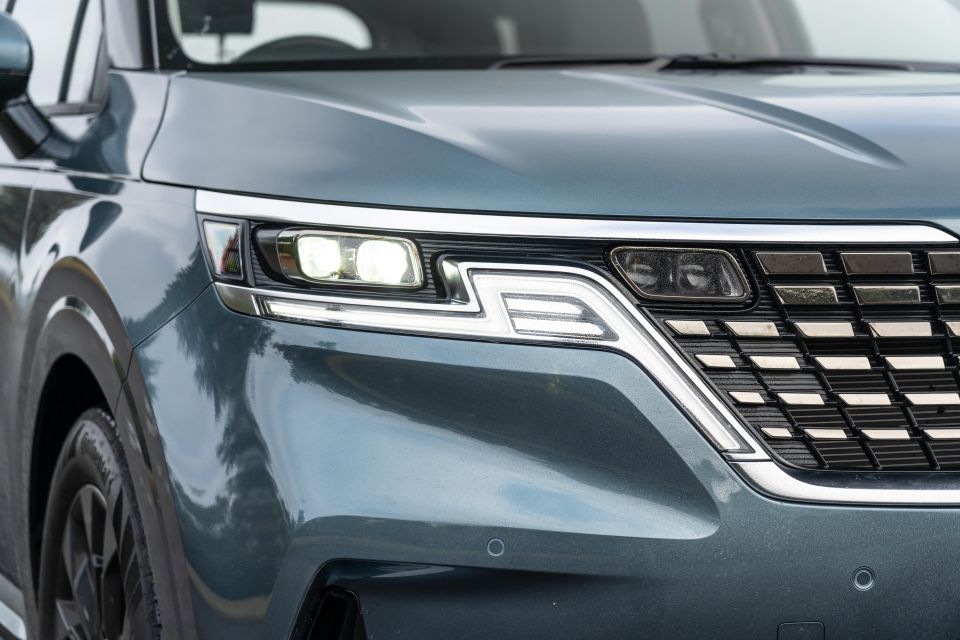
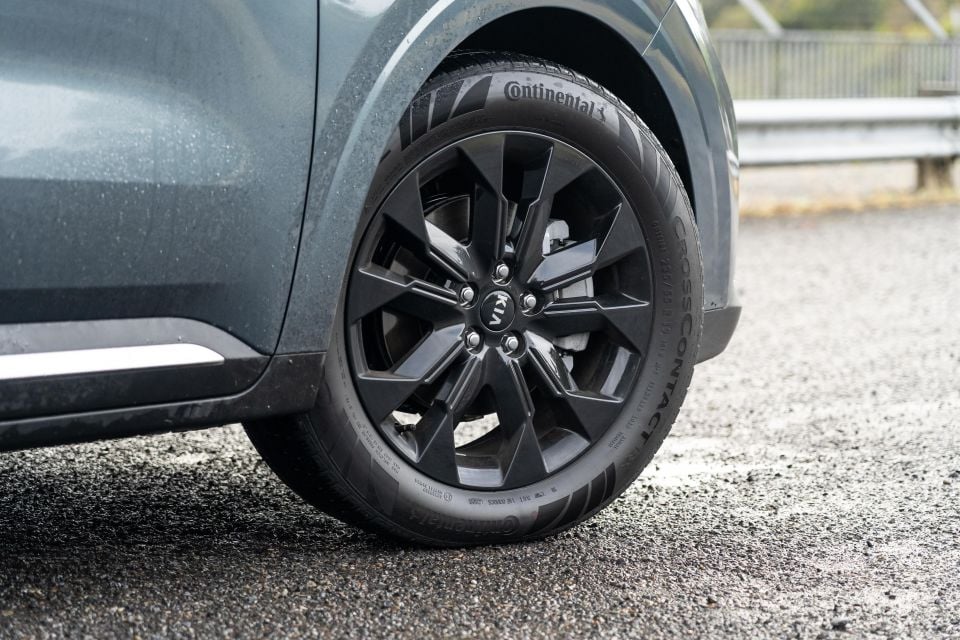
The 2021 Kia Carnival is yet to be tested by ANCAP. It launches in Australia without a centre airbag, which could prevent it from scoring a full five-star rating when it’s eventually tested. The previous model scored a five-star safety rating when tested in 2016.
Test results aside, the standard list of safety equipment is very impressive.
Seven airbags cover the cabin, including a driver knee airbag and curtain airbags that go all the way through to the third row of occupants.
There’s also low- and high-speed autonomous emergency braking with pedestrian and cyclist detection, an exit assistant that prevents doors from being opened when there is an approaching vehicle, along with a rear-seat occupant reminder that services both the second and third rows.
On the driving front there’s a lane-keeping assistant, a semi-autonomous steering function, junction AEB, reverse AEB, and rear cross-traffic alert.

I know this is massively cliché, but when you open the door and sit inside the new Carnival it feels like something from a German manufacturer.
The big 12.3-inch infotainment system dominates the cabin, while highlights such as the knurled metallic gear selector, stitching along the dashboard, and 3D lighting elements within the doors elevate the feeling of luxury.
Fit and finish throughout the cabin is excellent and the build quality feels top notch.
Kia’s new infotainment system offers a stack of real estate with the resolution pumped up to 720p, meaning the graphics are excellent. It features wired Apple CarPlay and Android Auto with voice recognition only working when smartphone mirroring is enabled.
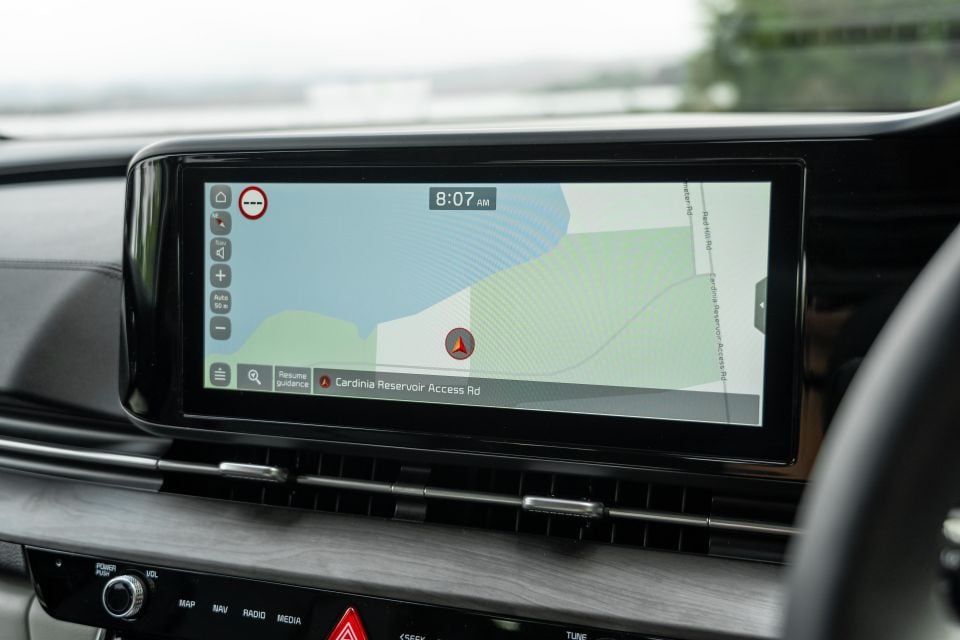

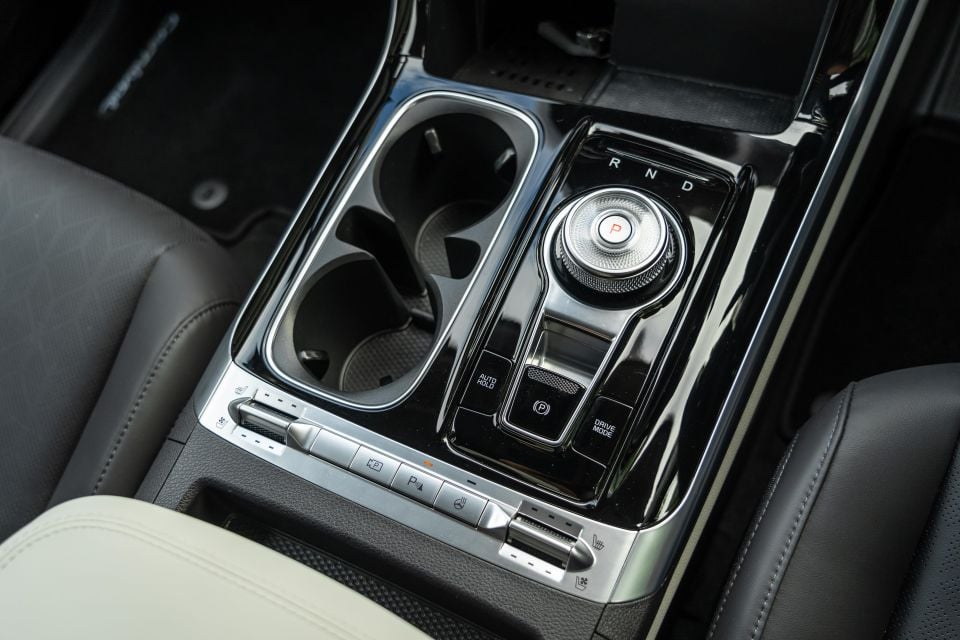
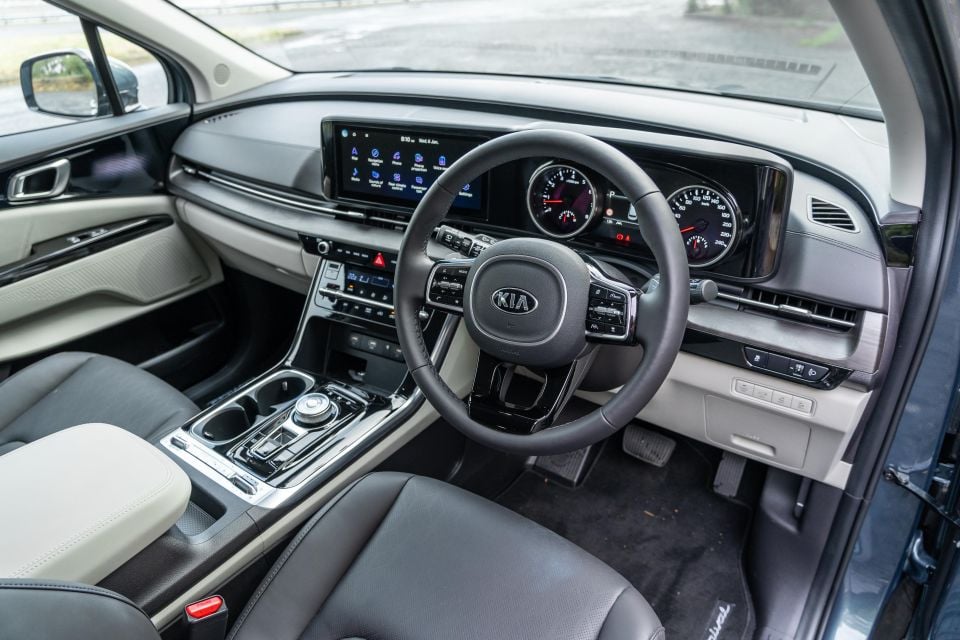
Native to the infotainment system is satellite navigation with traffic overlays, AM/FM and DAB+ radio, along with a 12-speaker Bose-branded sound system.
We loved the in-car intercom that amplifies the driver’s voice to second- and third-row occupants via the speakers, the ‘sounds of nature’ program that plays soothing sounds from nature to put the kids to sleep, and the quiet mode that kills the rear speakers and only plays audio for the first row.
The interior is let down by a couple of misses, though. Instead of featuring a secondary large LCD screen ahead of the driver with blind-spot monitoring cameras built in, the driver gets analogue gauges with a small LCD display in the centre.
The infotainment controls are also tricky to reach while driving. They require the driver to lean in to reach the screen to make changes.

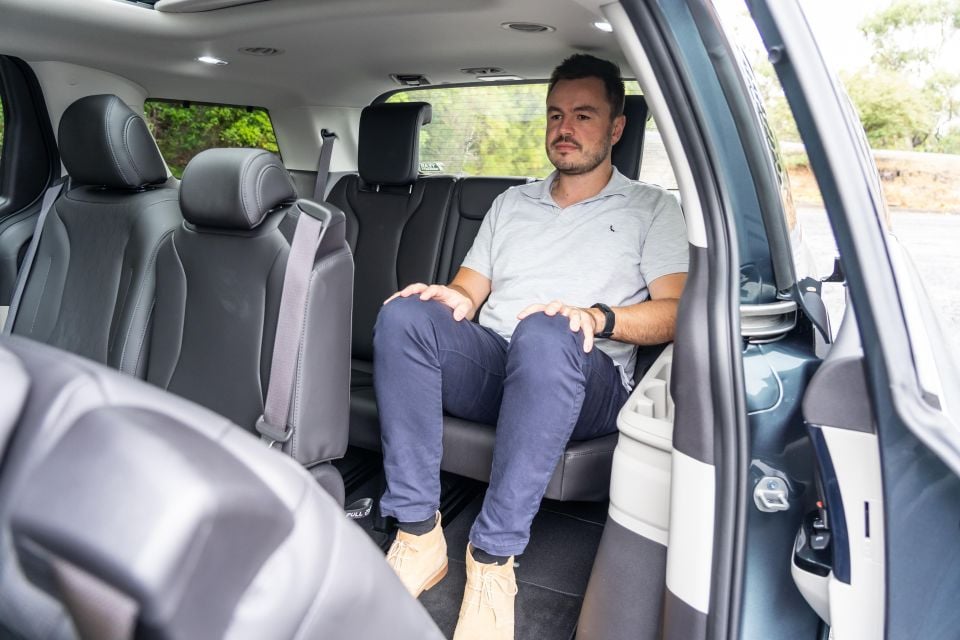
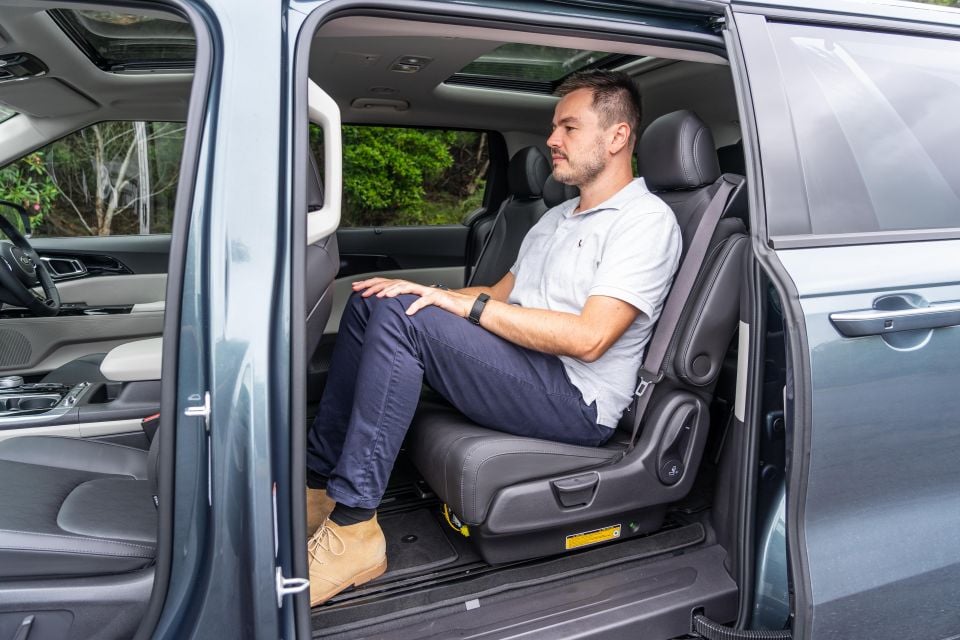
There’s no automatic windscreen wipers, instead the driver needs to manually activate them each time it rains.
Both of these missing items (along with a bespoke steering tune, which I’ll get to later) were victims of COVID-related delays. Local right-hand drive tuning for all of these items couldn’t take place in time for the launch of the new Carnival.
Kia Australia product planning general manager, Roland Rivero, told CarExpert these items would make their way into the 2022 Carnival update due later this year or early next year.
Put these items to the side for a moment and you’re left with a pretty impressive interior. In addition to heating and cooling for the first row, there’s a heated steering wheel and seat heating for the two outboard seats in the second row.

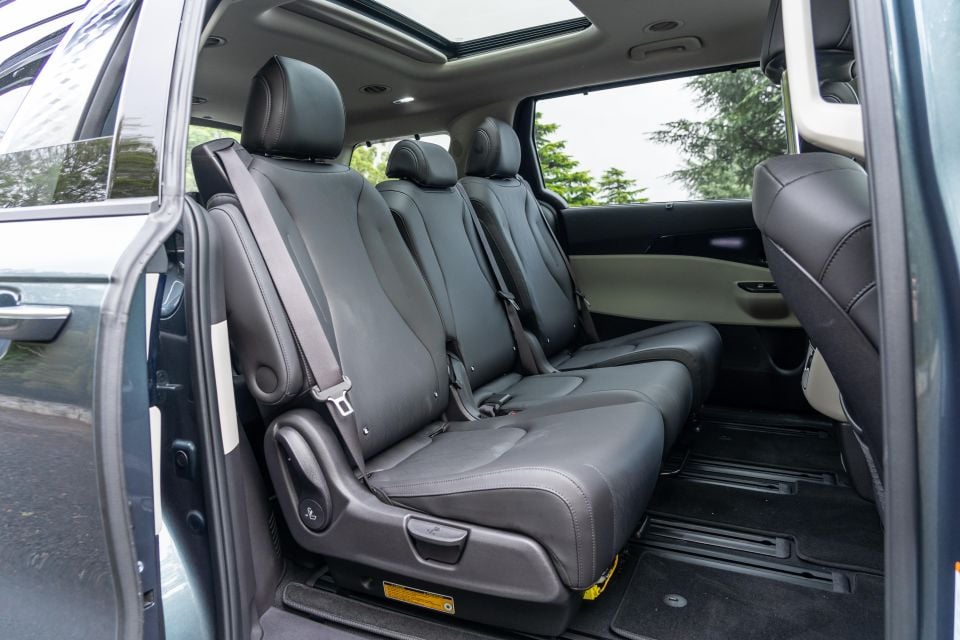
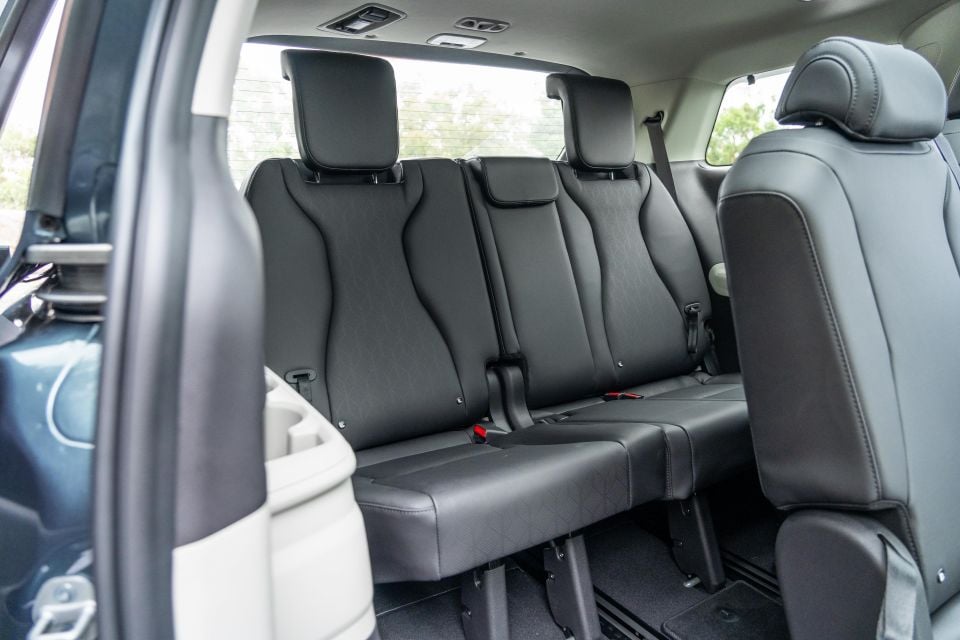
Up front there’s a deep centre console, door bins, cup holders, wireless phone charging, and a reasonably-sized glove box. The driver can control the powered doors and tailgate, in addition to switching off power door activation from the second row.
The Carnival’s updated dimensions have allowed for an extra 25mm of head room in the first row, an extra 3mm in the second row, and an extra 4mm in the third row. Legroom in the third row has also increased by 21mm.
The second row offers three seats that individually slide and tilt. The windows come with manual shades and can also be opened for fresh air.
The middle seat can be entirely removed and rotated to face the opposite direction. Handy for international markets where child seats can be installed on a seat facing the opposite direction, but in Australia it’s a no-no.
Either way, with the middle seat removed the Carnival offers easy access to the third row. Alternatively the two outboard seats can tilt and slide for easy access with grab handles about the C-pillar.
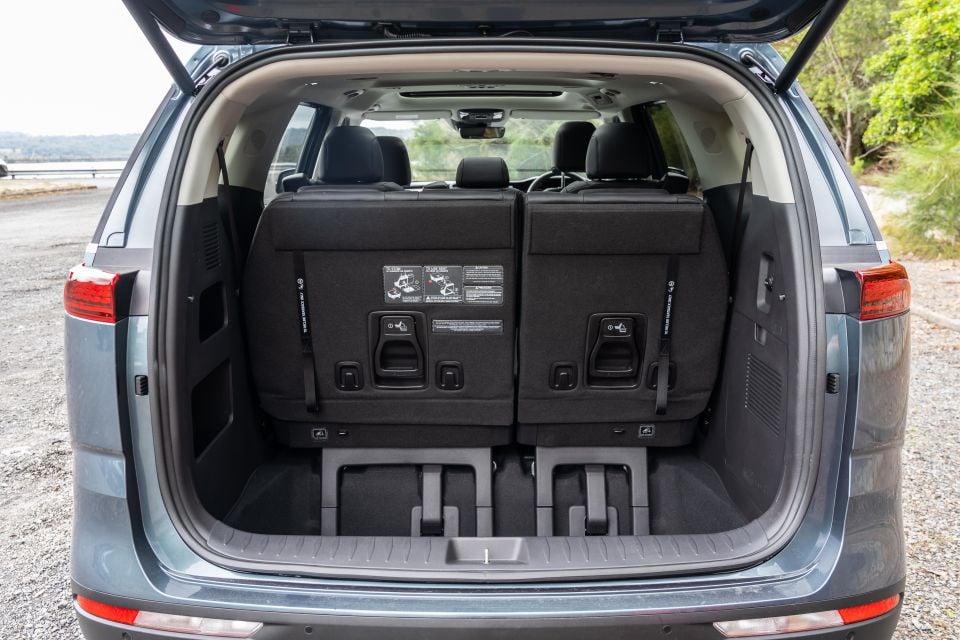
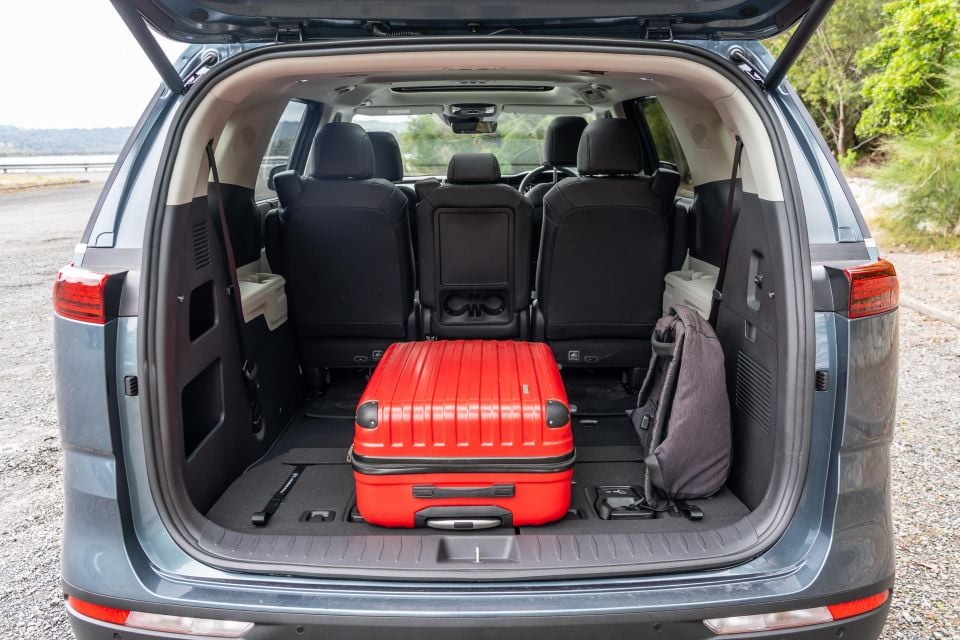
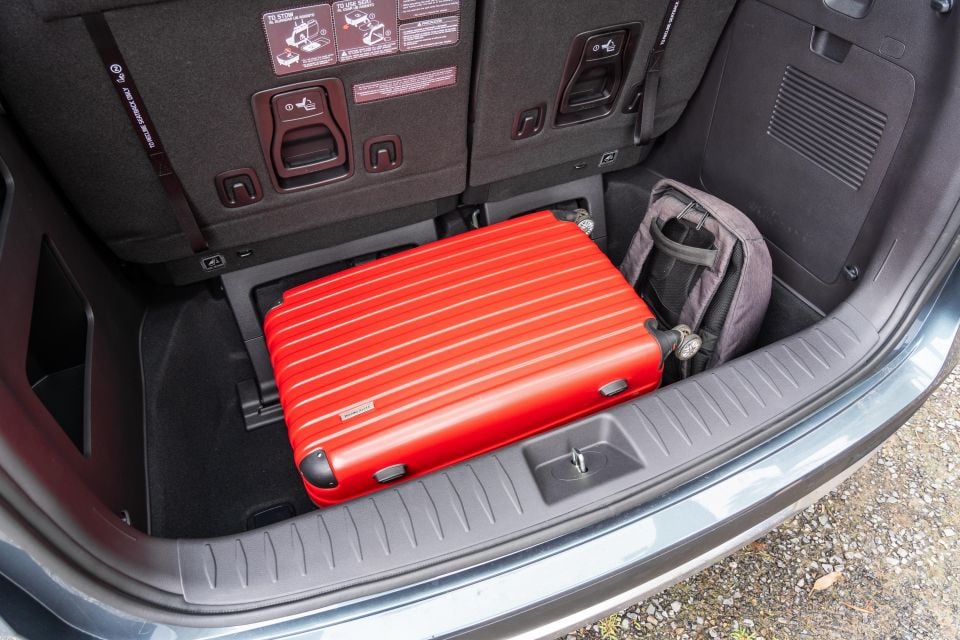

The third zone of automatic climate control can be accessed by second-row passengers or controlled by mum and dad up front.
There are three USB points up front, with an additional two for the second row built into the driver and front passenger seat, and there’s a 12V socket in the centre. The third row offers an additional two USB slots.
There’s also two cup holders behind the centre console and the ability to fold the centre seat in the second row flat to use as a table with two additional cup holders.
Over in the third row you’ll find three more seats with ample accommodation for adults. Back there you’ll also find more cupholders and roof-mounted air vents.
The third row is easy to stow, with a simple pull and push mechanism that drops it into the floor cavity. Speaking of which, there’s 627 litres available behind the third row (up to the top of the third row). The cavity is now also easier to access thanks to Kia lowering the boot lip by 26mm. If you stow the third row cargo volume increases to a massive 2785 litres.
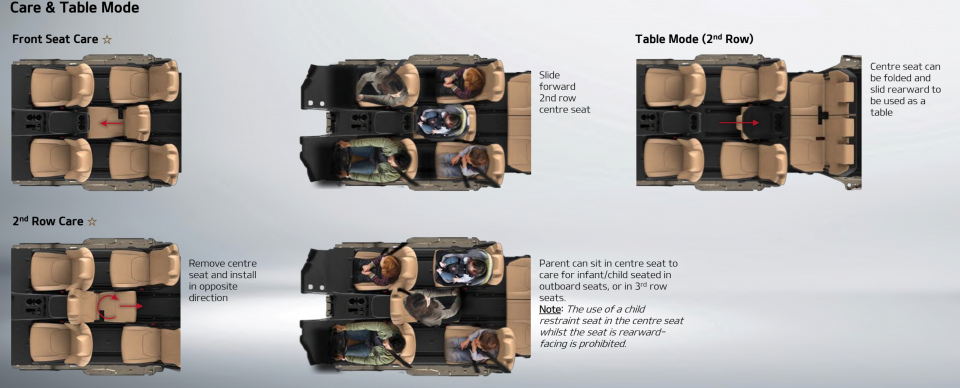
Another handy function is the litany of smart key options. The proximity key can be used to individually open and close both power sliding doors or the tailgate, along with starting the car remotely.
It can also be configured to automatically open either the power sliding doors or the tailgate when you approach the vehicle with the key in your pocket (handy if you have your hands full). It can also close the tailgate and lock the vehicle as you walk away without needing to push any buttons.
There’s now a global open/close feature that can open all powered doors simultaneously, or close them by pushing and holding either unlock or lock for three seconds.
Finally, it’s worth pointing out how impressive the reversing camera is. The 360-degree camera offers a number of view angles, including coverage of the front and rear wheels in addition to front and rear parking sensors.
If you want to see the technology in action, or get an explanation of parking technology, simply check out our detailed explainer.

Powering the petrol Kia Carnival Platinum is a naturally-aspirated 3.5-litre V6 petrol engine producing 216kW of power and 355Nm of torque.
It’s mated to an eight-speed automatic torque converter transmission and exclusively sends torque to the front wheels. Despite sharing its platform with the new Sorento, the Carnival isn’t available and won’t be made available in all-wheel drive.
On the combined cycle it consumes a claimed 9.6 litres per 100km. Most of our driving during our near 1000km stint in the car was on the highway, with less in the city. With that in mind, we were pretty impressed with a fuel economy of just over 8.0L/100km.
With more city driving that figure would likely be over the 10L/100km mark.

Kia has gone to great lengths to reduce road noise within the cabin by adding a noise insulating film to the windscreen, adding hydro bushes to the front subframe, and changing the body structure to limit noise, vibration, and harshness.
It’s immediately evident when you start the engine. Granted, the naturally-aspirated petrol V6 in the old Carnival was never noisy, but it idles quietly and sits peacefully in the background.
Even when you start driving you can barely hear a murmur from the engine as it motors along.
The petrol V6 engine produces 10kW more power and 19Nm more torque than the previous model. It inspires confidence behind the wheel and never really feels like it’s struggling to cope with the Carnival’s circa-2000kg mass.
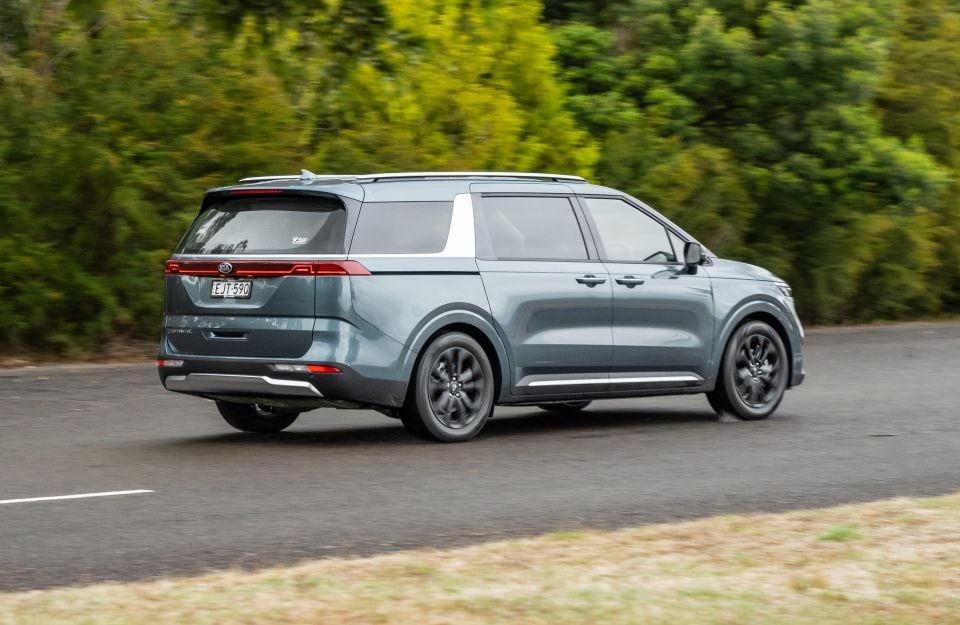
The eight-speed automatic transmission is extremely smooth and rarely misses a beat. In the wet there can be a hint of torque steer if you hit the throttle too hard, but Kia has dialled in a progressive torque application to prevent sudden surges of torque to the front wheels.
Peak torque gradually comes on through to its 5000rpm peak meaning everything feels nice and linear.
The ride is the part that impressed us the most. A McPherson Strut-style suspension is used up front with a multi-link setup at the rear. Changes to spring angles, the lower arm mounting point, and the connections to the body have given Kia more control over ride compliance.
A bespoke ride and handling tune was developed for Australia primarily focused on comfort with a sporty edge. It meets that brief by soaking up bumps in and around the city and dealing well with continuous undulations out on the highway.
It’s certainly not a ‘sporty’ car but it feels confident through corners and dare I say it, can be fun to drive.
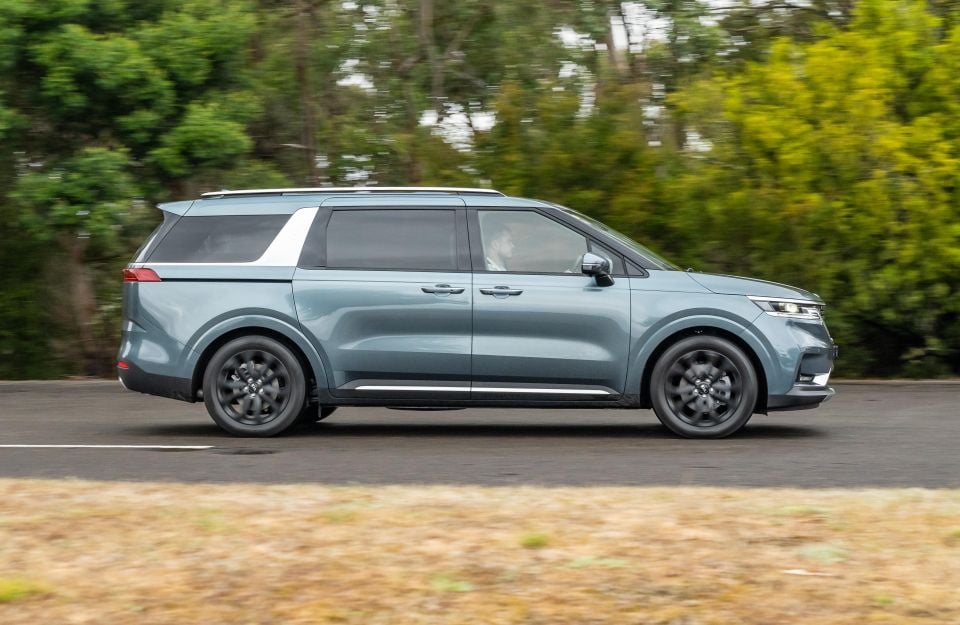
The only letdown is the steering. The tune itself is very light with little feel around centre. This is one aspect of the handling package that Kia couldn’t complete prior to Melbourne going into an extended COVID lockdown – for now, we get a tune biased towards comfort rather than engagement.
It’s not bad, it’s just not quite at the standard we’ve come to expect from locally-tuned Kia models.
And despite the extra work Kia has done to insulate the cabin road noise, there’s still a bit of tyre roar at highway speeds on coarse chip roads. You’ll notice it most in the second and third rows where it builds up at speeds above 80km/h.
Outside of these points, the Carnival is very capable and while you may rush to buy the diesel, we found the petrol offers plenty of punch and can be very efficient when driven sensibly.
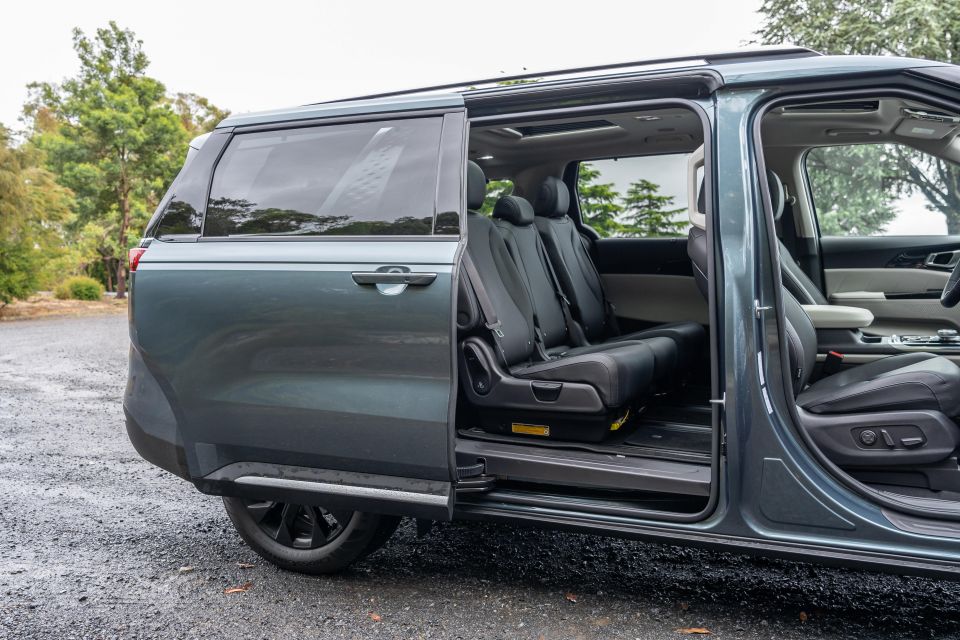
Where expert car reviews meet expert car buying – CarExpert gives you trusted advice, personalised service and real savings on your next new car.
Kia hasn’t announced servicing costs for the all-new Kia Carnival just yet. Once it does we will update this story.
We do know service intervals for the petrol V6 will be every 12 months or 15,000km, whichever occurs first.
Servicing costs for the previous generation petrol V6 Carnival came in at $2507 over a five year period, which averages out to $501.40 per service.
Additionally, the Carnival comes with a seven-year, unlimited-kilometre warranty.
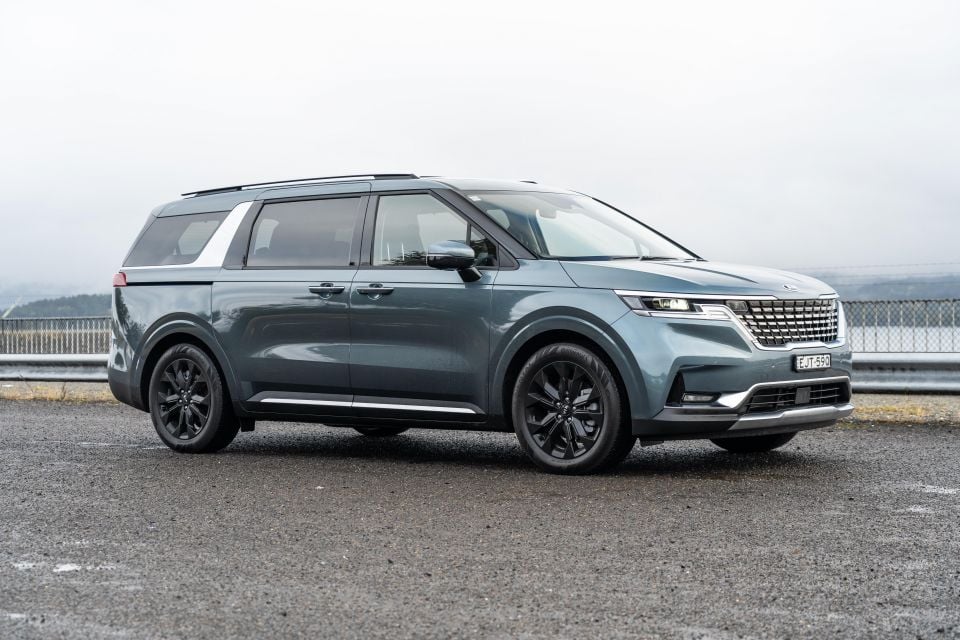
The all-new Kia Carnival is impressive. Actually, it’s seriously impressive.
Kia has knocked the design out of the park and delivered an interior that looks like it could belong in an expensive German SUV, let alone a family hauler.
It drives beautifully and eats up the miles like you wouldn’t believe. It’s disappointing that it’s missing something as basic as automatic windscreen wipers, and that it won’t get the digital driver’s instruments from the Sorento until next year.
The overly light steering tune is also likely to change at some point later this year.
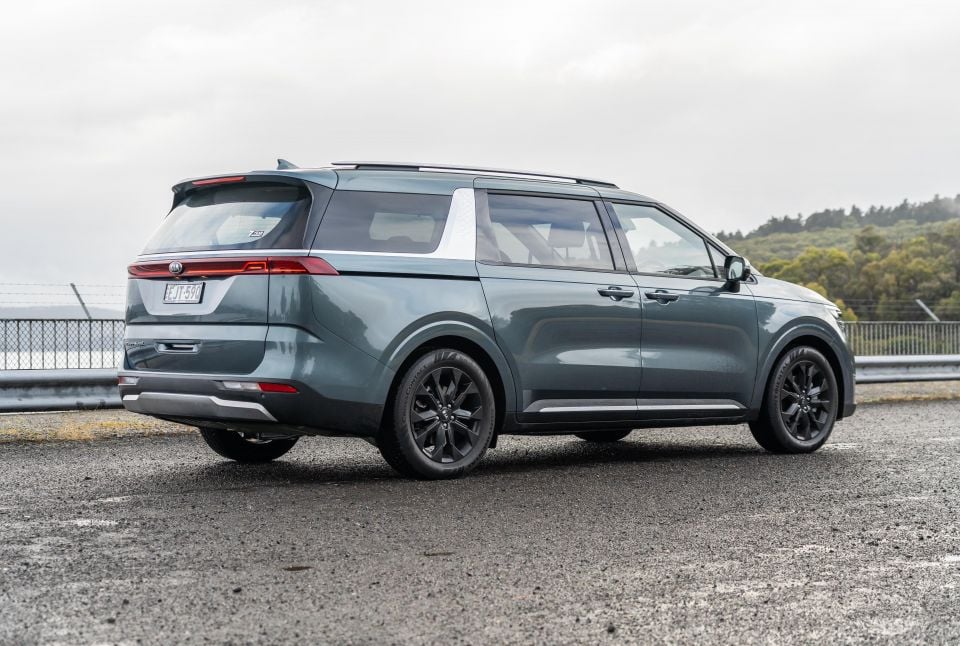
Most of this was, unfortunately, unavoidable due to the current pandemic. But in saying that, it’s all barely a deal-breaker.
This is finally a people mover that removes most of the need for a big SUV. It offers more room inside, drives just as well, and doesn’t feel compromised.
If you’re only buying an SUV to head to the snow once a year or to camp occasionally, maybe you’re better off just renting a four-wheel drive SUV for those few occasions and sticking with a spacious people mover instead.
Either way, we really like this thing. It’s a testament to how far Kia has come and how quickly it’s leaving Korean stablemate Hyundai in the dust in terms of design and a refreshed range.
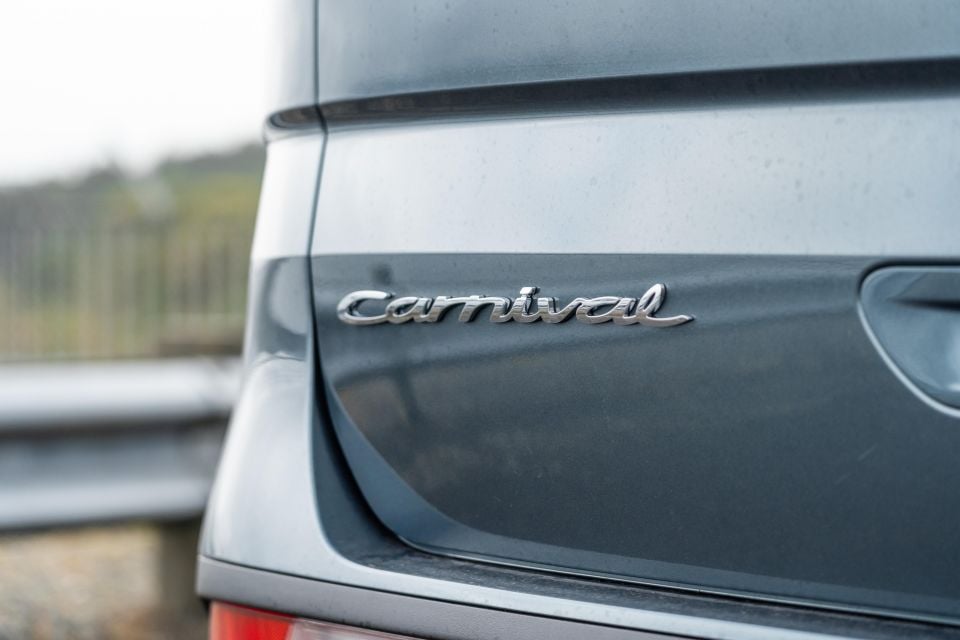
Click the images for the full gallery
MORE: Kia Carnival news and reviews MORE: Everything Kia
Where expert car reviews meet expert car buying – CarExpert gives you trusted advice, personalised service and real savings on your next new car.
Paul Maric is a CarExpert co-founder and YouTube host, combining engineering expertise with two decades in automotive journalism.


William Stopford
4 Hours Ago


Ben Zachariah
5 Hours Ago


Derek Fung
5 Hours Ago


Matt Campbell
12 Hours Ago


William Stopford
1 Day Ago


Josh Nevett
1 Day Ago